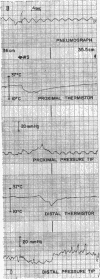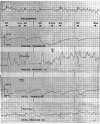Abstract
Hot and cold water, in comparison to room temperature water, ingested by normal young men, profoundly alters esophageal motor function. Cold water slows or abolishes esophageal peristalsis, prolongs the contraction wave in the distal esophagus, produces a delayed but prolonged relaxation of the lower esophageal sphincter, and regularly causes a lower esophageal sphincteric contraction of increased amplitude. It does not, however, diminish the frequency of response of the lower esophageal sphincter even when the peristaltic wave above is abolished. Hot water, on the other hand, accelerates the response of the esophagus to the swallow; this change is reflected by increased speed of wave propagation, waves of shorter duration, a more brief relaxation of the lower esophageal sphincter, and a lower esophageal sphincter contraction of less amplitude. Hot water may even increase the frequency of peristalsis at least in the proximal esophagus. In spite of these changes, however, neither extreme of temperature altered the rapid passage of the water swallows through the more proximal portions of the esophagus. Hot water tended to traverse the lower esophageal sphincter more rapidly than did room temperature water, but cold water was often delayed in entering the stomach and tended to pool in the distal esophagus even though sphincteric relaxation was manometrically complete and prolonged.
Full text
PDF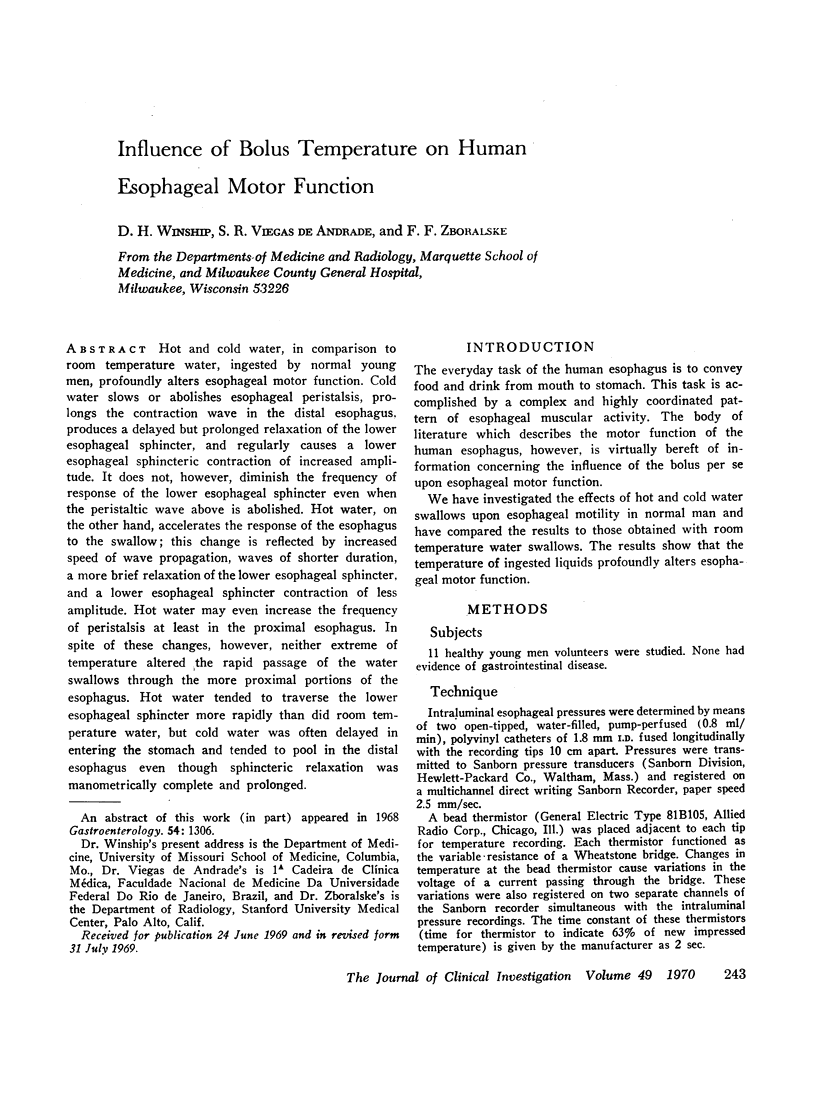
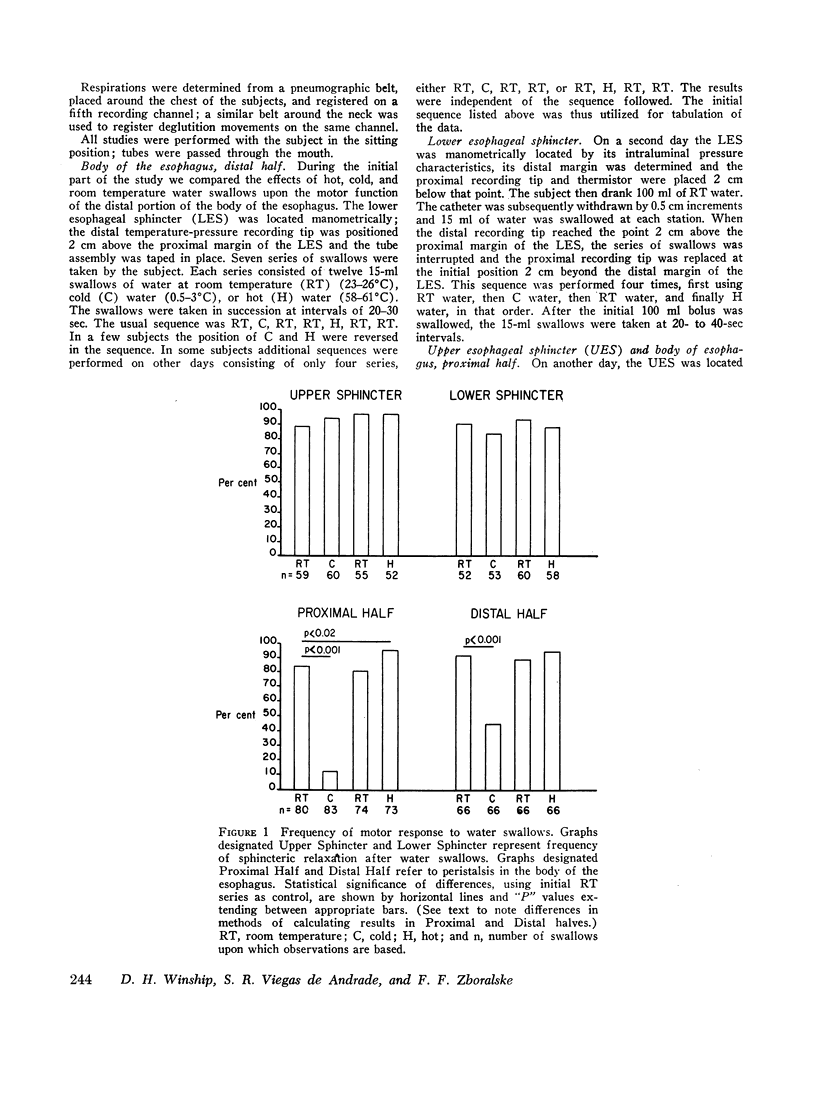
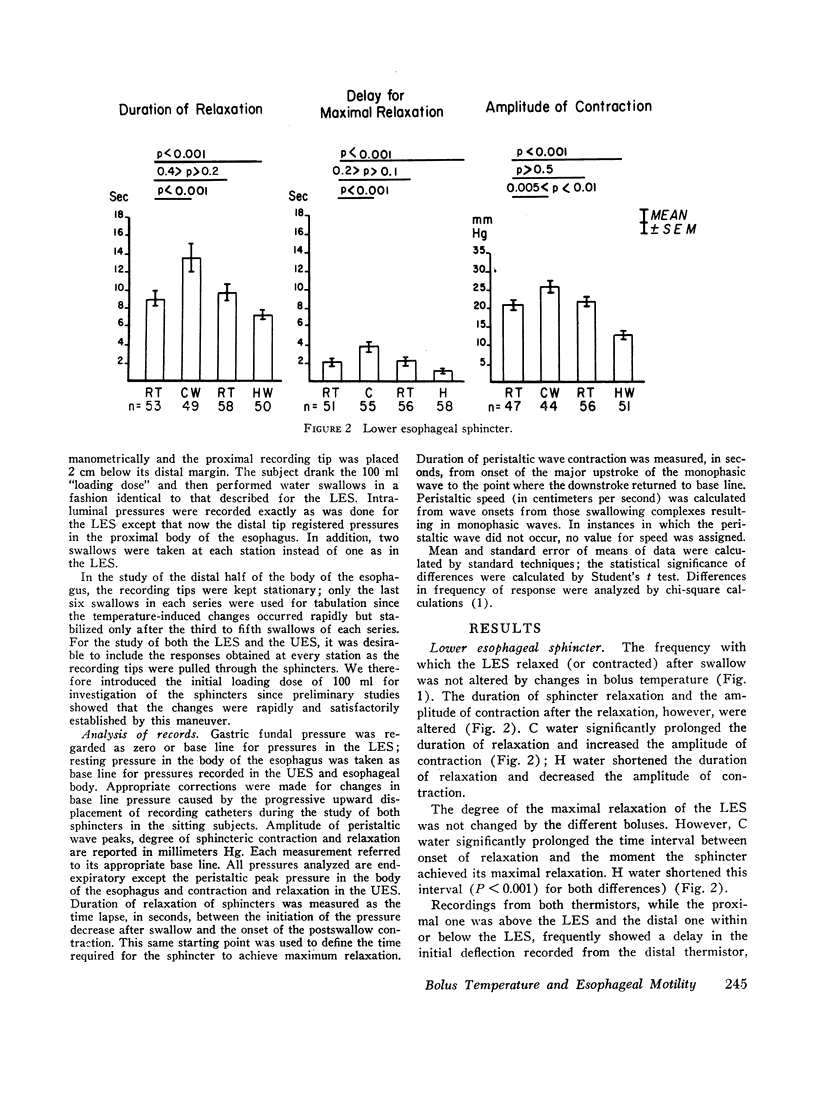
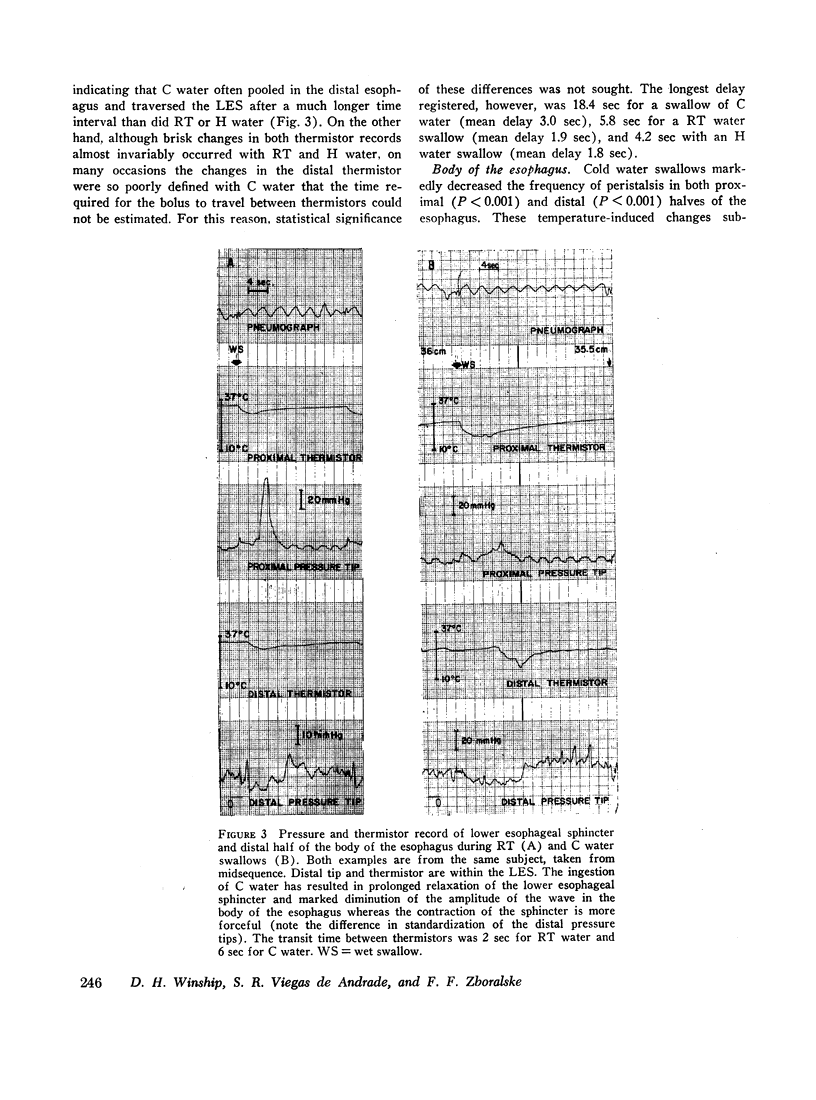
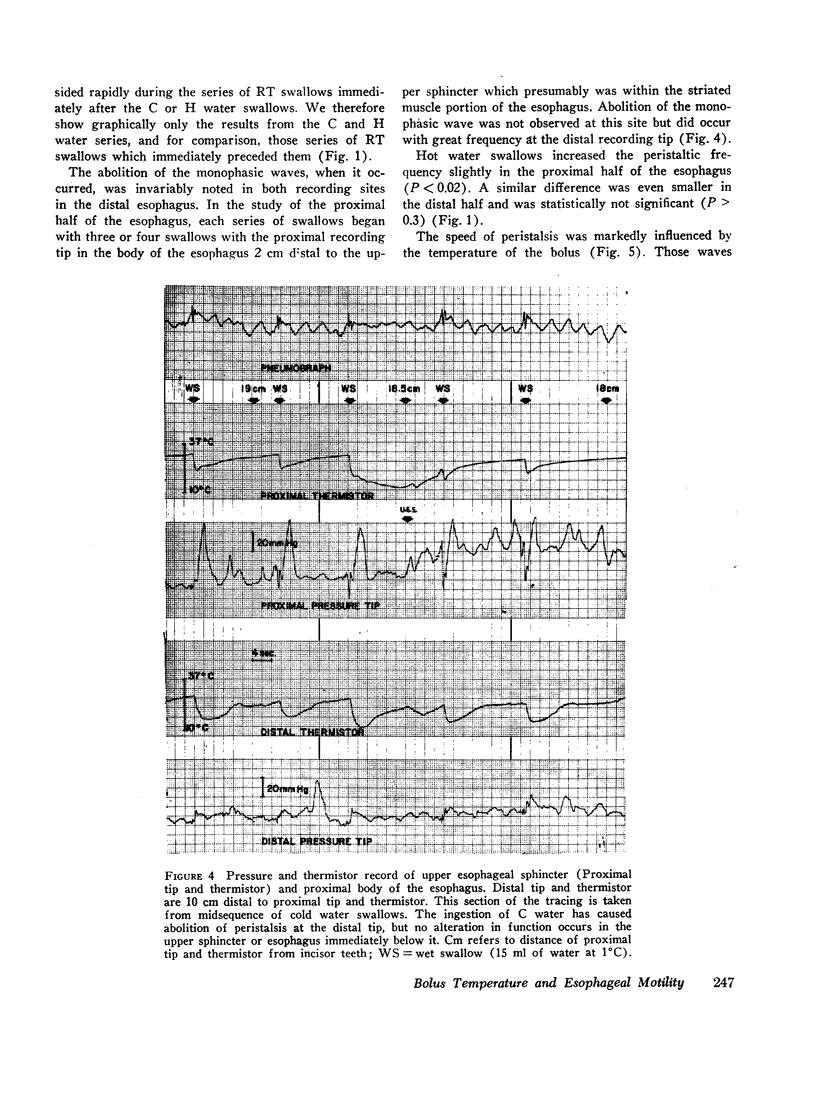
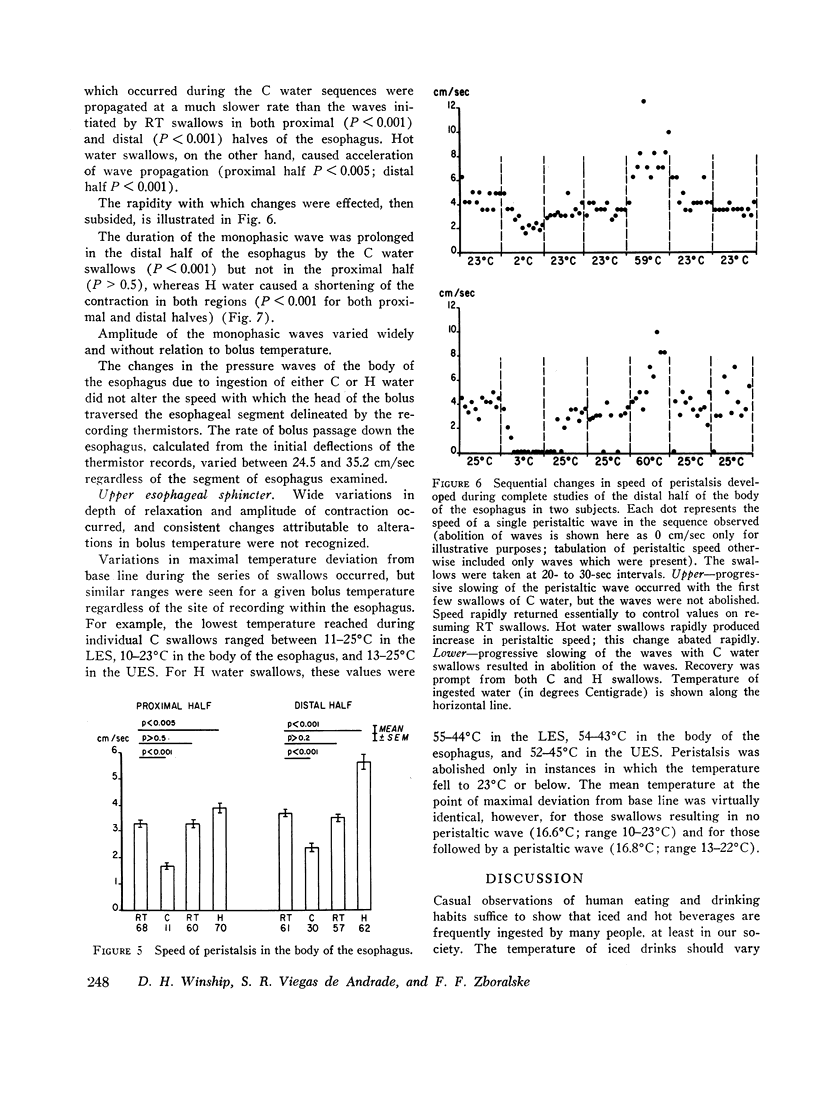
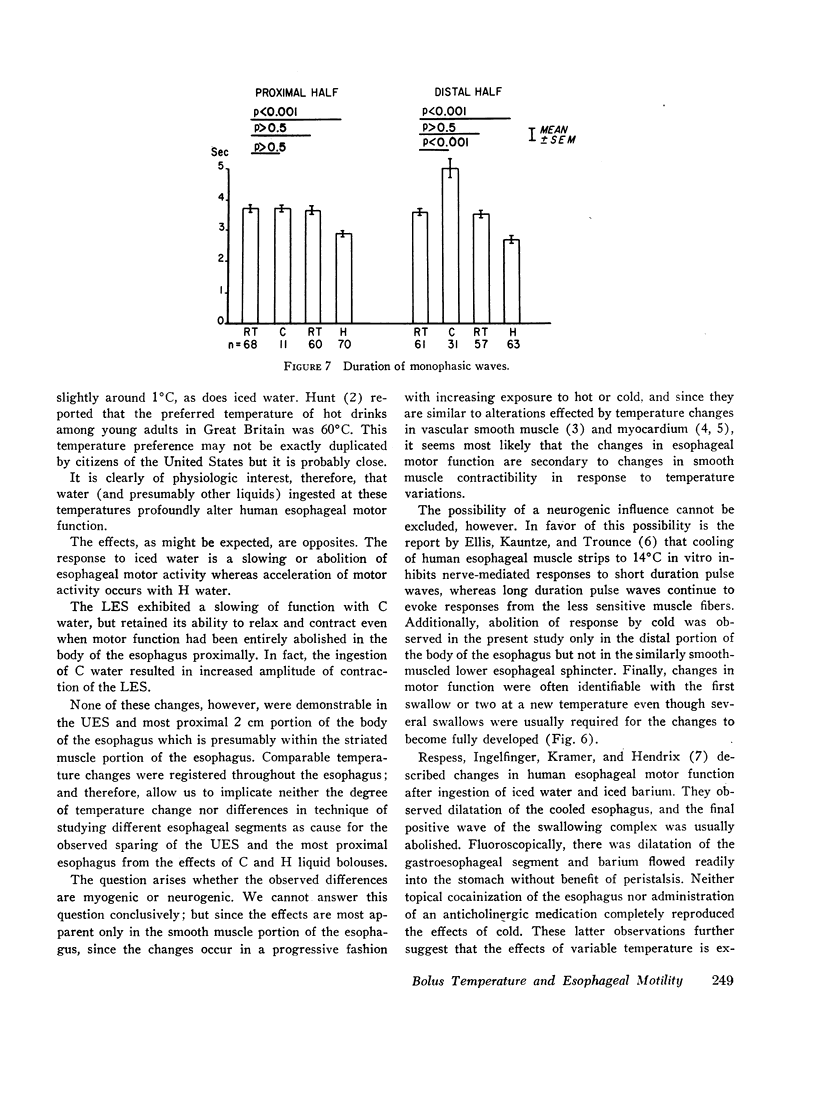
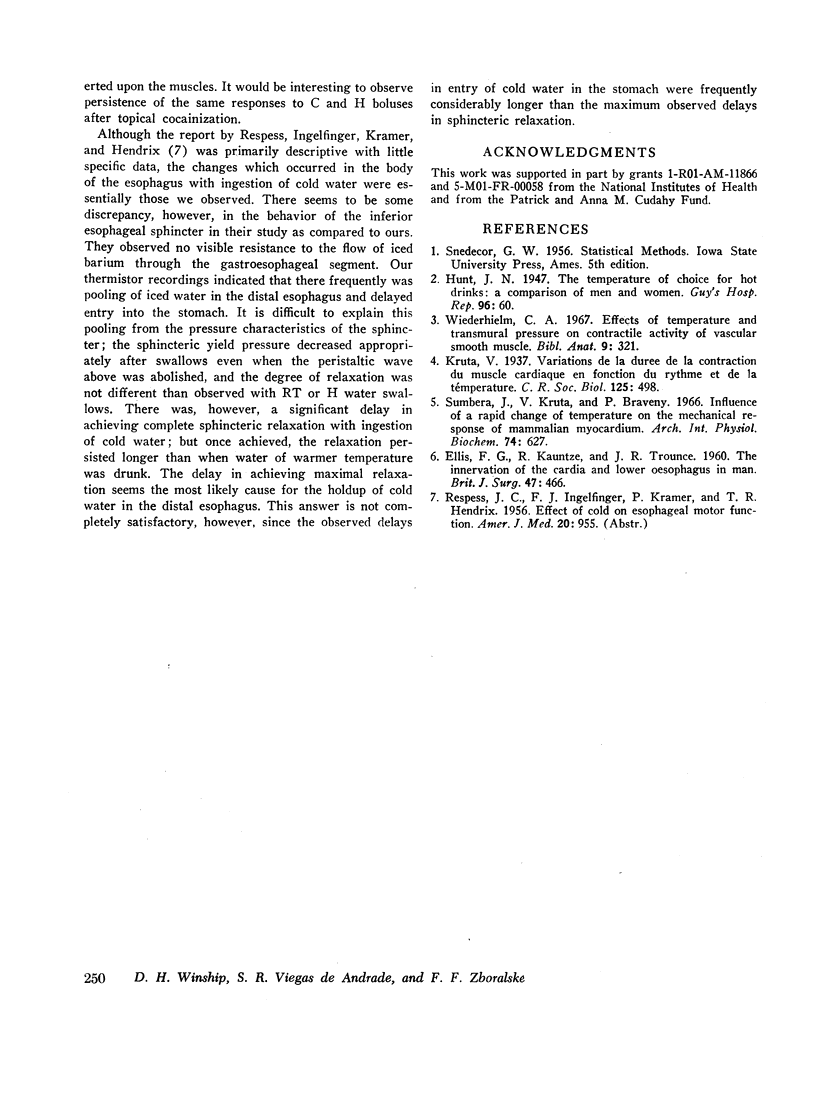
Images in this article
Selected References
These references are in PubMed. This may not be the complete list of references from this article.
- ELLIS F. G., KAUNTZE R., TROUNCE J. R. The innervation of the cardia and lower oesophagus in man. Br J Surg. 1960 Mar;47:466–472. doi: 10.1002/bjs.18004720503. [DOI] [PubMed] [Google Scholar]
- Sumbera J., Kruta V., Bravený P. Influence of a rapid change of temperature on the mechanical response of mammalian myocardium. Arch Int Physiol Biochim. 1966 Sep;74(4):627–641. doi: 10.3109/13813456609059941. [DOI] [PubMed] [Google Scholar]
- Wiederhielm C. A. Effects of temperature and transmural pressure on contractile activity of vascular smooth muscle. Bibl Anat. 1967;9:321–327. [PubMed] [Google Scholar]




